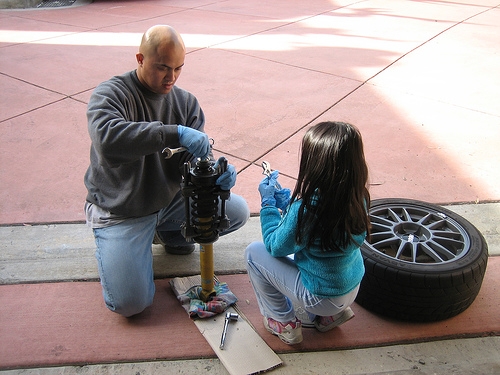
Suspensions seem incredibly complicated to the untrained eye, and they are. However, even the inexperienced can diagnose and repair certain problems for themselves, without paying mechanic trial-and-error prices.
As the name suggests, tie rods tie the wheels on either side of your car together to keep the wheels pointed straight. Tires that have feathered wear on either the inside or the outside of the tread can indicate worn or maladjusted tie rods, which must be either adjusted or replaced.
Bushings are the cylindrical rubber shock absorbers that fit between each moving and stationary part of your suspension. Bad bushings are indicated by vibration, road noise and squeaking, and should be replaced.
If your car rolls heavily under sustained cornering ( "It steers like a boat." ), then your springs may have gone soft. Replacement is the only safe option,
If your car roll excessively during quick left-right transitions, you may have one or more blown shocks or struts. Again, replacement is mandatory.
If your steering becomes "numb" or unresponsive just off center, you may have worn or bent steering components. Worn steering end-links and broken components must be replaced, but bent or loose components can often be repaired.